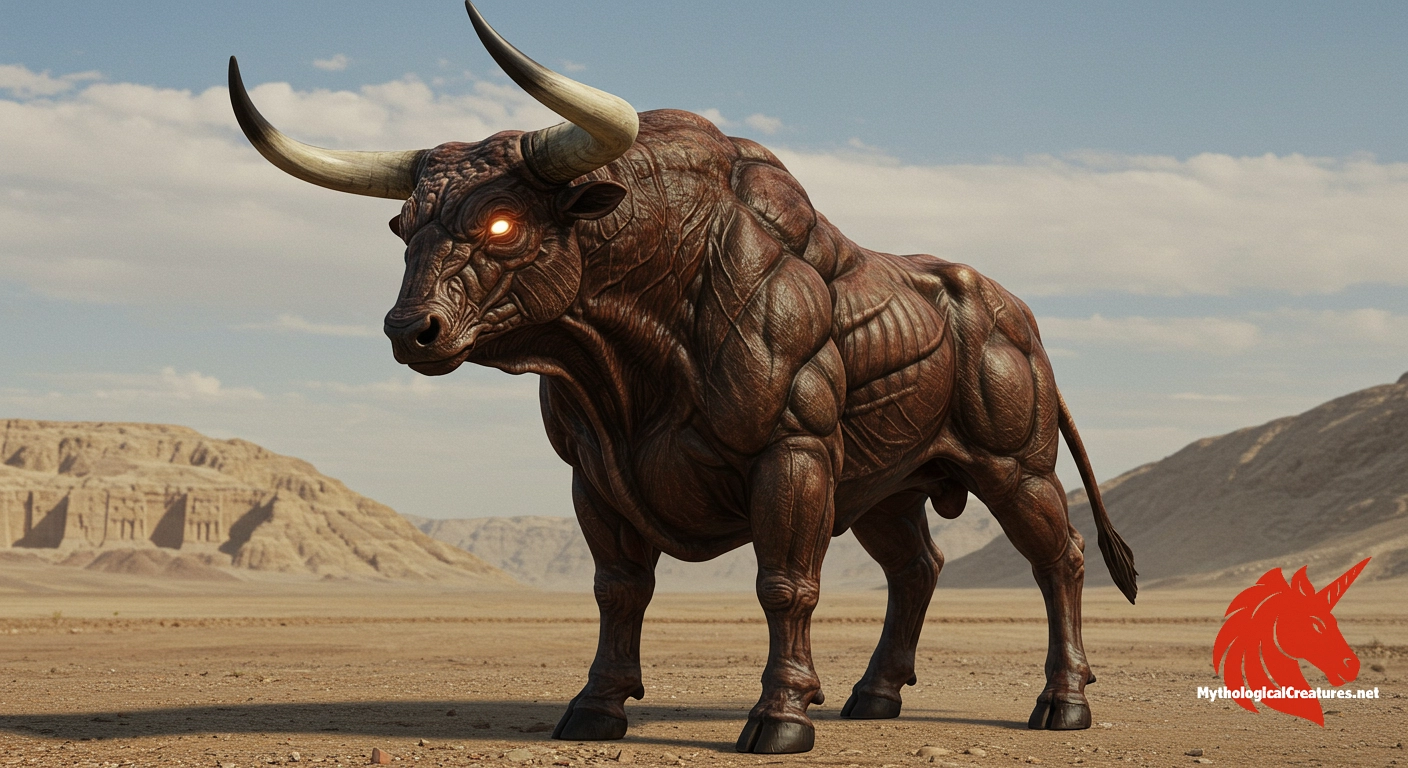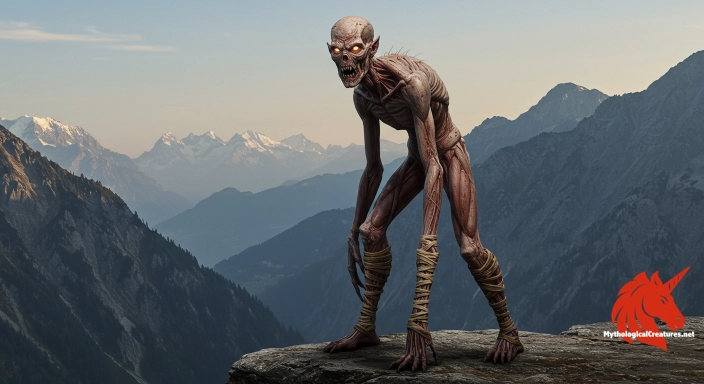Bull of Heaven: The Bull of Heaven is a mythological Mesopotamian beast sent by a goddess to attack Gilgamesh.

Bull of Heaven
Bull of Heaven - Its slaying catalysed the downfall of Enkidu and underscored themes of mortality and divine punishment in the epic.
Origins & First Encounters
The Bull of Heaven emerges as one of Mesopotamia’s most striking mythological symbols, a creature that embodies both divine wrath and cosmic significance. It first appears in an ancient Sumerian poem, laying the groundwork for its later, more elaborate portrayal in the Babylonian Epic of Gilgamesh. Its narrative is interwoven with the exploits of Gilgamesh and his companion Enkidu, making it a central figure in the exploration of mortal destiny and divine intervention. Its origins, linked to potent deities like Inanna and Ishtar, reflect the intricate interplay between the supernatural and the earthly in early Mesopotamian society. The creature’s calling and subsequent role as an instrument of transgression and retribution amplify the themes of fate, honour, and mortality. The tale underscores how the gods exercised their power to enforce cosmic order, often at the expense of heroic pride. This mythic beast also functioned as a celestial marker, its association with the constellation Taurus hinting at ancient astronomical practices. Its legendary status was further cemented by the narrative consequences that followed its defeat, setting in motion the tragic fates of its human adversaries. The story’s layered symbolism continues to echo across millennia, inviting us to explore the deeper mysteries behind divine-human interactions. Every retelling adds nuance to its character, ensuring that the Bull of Heaven remains an enduring emblem of ancient myth and cosmic order.
Source Texts & Tale Variants
The primary attestation of the Bull of Heaven is found in a Sumerian poem, where the beast is invoked in a dramatic context to challenge the heroic realm. This early source presents the bull as a mysterious and ominous entity, though its precise motivations remain shrouded in ambiguity. A later, more detailed account is offered in Tablet VI of the Standard Babylonian Epic of Gilgamesh, where the narrative expands to include a direct confrontation with divine forces. In this version, the bull is sent by the goddess Ishtar as an instrument of vengeance after her advances are spurned by Gilgamesh. The Akkadian text incorporates elaborate literary techniques and dramatic tone, emphasising the bull’s formidable nature. Variations between the Sumerian and Babylonian texts highlight the evolution of myth, with each version reflecting subtle shifts in religious and societal values. Additional fragments from related ancient Near Eastern traditions suggest that the bull’s symbolism transcended its narrative role, interfacing with both ritualistic practices and astronomical observations. Across these sources, recurring themes of divine punishment and heroic defiance demonstrate how the tale resonated deeply with its audience. The multiplicity of versions allowed for a rich tapestry of interpretations that enriched the myth over time. Together, these texts create a multifaceted portrayal of a creature that was as enigmatic as it was fearsome.
Form & Powers
The Bull of Heaven is depicted as an awe-inspiring and colossal creature, its form imbued with both raw power and an almost divine radiance. Its massive physique is accentuated by powerful limbs and a robust frame that seems to have been sculpted by the very forces of nature. Intricate descriptions hint at a hide that shimmers with celestial patterns, suggesting that its essence was intertwined with the stars. The bull’s horns, curved and imposing, stand as symbols of both its strength and its connection to the heavenly sphere. It is often imagined with eyes that glow with an inner fire, providing a window into the beast’s untamed, otherworldly nature. Ancient iconography sometimes portrays the creature as larger than life, a behemoth that imposes its presence on both the earthly and the cosmic realms. Varying depictions across texts imply that its size and appearance might change symbolically, reflecting shifts in narrative emphasis. Each physical detail—from the shimmering hide to the majestic horns—reinforces its role as a potent symbol of divine might. The Bull’s visual characteristics continue to captivate modern imaginations, serving as a bridge between ancient myth and contemporary artistic reinterpretations. Its magnificence underscores the formidable power assigned to it by the gods.
Regional Faces
In the heart of ancient Mesopotamia, the Bull of Heaven was not only a mythic antagonist but also a cultural emblem that reflected the era’s religious and astronomical concerns. Regional tellings of the myth exhibit variations that align with local traditions, where the bull is sometimes portrayed with distinctive attributes echoing indigenous celestial motifs. In Sumerian contexts, its appearance was closely tied to the capricious nature of deities like Inanna, while in Babylonian renditions, it evolved into a cosmic adversary linked to the punitive aspects of Ishtar’s wrath. Different communities adapted the myth to resonate with their unique experiences of the divine, often enhancing its roles within seasonal and agricultural cycles. In certain local traditions, the bull’s alignment with the constellation Taurus reinforced its identity as a marker of time and celestial order. Folk narratives in surrounding regions occasionally imbued the creature with traits that symbolised both fertility and destruction, reflecting the dual nature of rural life. Regional adaptations also allowed communities to weave the bull’s myth into their ritualistic practices and iconographic programs. The cross-cultural diffusion of its narrative highlights the bull’s fluid identity, capable of absorbing local colours while retaining its universal symbolic power. Over time, these regional variations enriched the overarching myth, demonstrating a dynamic interplay between a shared heritage and local innovation. Thus, the bull’s portrayal served as a mirror to the diverse cosmological perspectives of the ancient Near East.
Cultural Parallels
The narrative of the Bull of Heaven finds compelling echoes in the mythologies of many other cultures, where formidable bulls emerge as potent symbols of both mortal strength and divine potency. Similar to the Mesopotamian tradition, Greek myths feature the bull in various forms, such as the celebrated tale of the Cretan Bull or even the mythic Minotaur, which underscores themes of uncontrollable power. In Egyptian lore, the revered Apis bull serves a parallel role, symbolising fertility, resurrection, and the embodiment of divine energy. The recurring motif of the bull in these diverse cultures reflects a shared recognition of the animal’s embodiment of virility and elemental force. Across narratives, the bull is often depicted as a carrier of cosmic significance—bridging the gap between earthly existence and celestial order. Comparative studies reveal that while the specifics of each bull myth differ, the underlying symbolism of divine retribution, fertility, and heroic challenge remains strikingly consistent. The cross-cultural dialogue between these traditions illuminates how the image of the bull serves as a universal metaphor for power and transformation. Its mythic persona has been adapted to articulate cultural anxieties about power, chaos, and the natural order. The resonances between these stories invite a broader exploration of humanity’s enduring fascination with the majestic and the mysterious. Thus, the bull continues to serve as an enduring symbol of the intricate balance between civilized order and the untamed forces of nature.
Legacy & Modern Evolution
The myth of the Bull of Heaven has journeyed through time, evolving from an integral part of ancient epic narratives to a symbol that continues to captivate contemporary imagination. Its earliest portrayals in Sumerian and Babylonian texts laid a strong foundation for a legacy that intersects literature, art, and astronomy. Over centuries, the creature’s image has been reinterpreted by scholars, artists, and writers, each drawing on its inherent symbolism of divine wrath and heroic challenge. In modern times, the bull’s connection to the Taurus constellation has spurred renewed interest in its astronomical and astrological connotations. Contemporary retellings often highlight the timeless conflict between mortal agency and supernatural determinism, using the bull as a powerful metaphor for nature’s unpredictability. Its presence in visual arts, literature, and even popular media speaks to its enduring appeal and multifaceted legacy. The evolving interpretations mirror changes in societal values, with each era finding new meaning in the creature’s ancient narrative. Today, the Bull of Heaven stands not only as a relic of ancient myth but also as a vibrant symbol that continues to provoke reflection on the balance between chaos and order. It reminds modern audiences of the deep cultural and spiritual currents that have shaped human civilisation since time immemorial.
Interesting Fact
The Bull of Heaven is intricately linked to the Taurus constellation, reflecting ancient Mesopotamians' efforts to merge celestial phenomena with their mythological narratives.
Quick Creature Info
Origin:
Features:
Associations:
Our Mythic Legendary Rating:

Habitat:
Supernatural Powers:
Physical Attributes:
Abilities:
Behavior:
Weaknesses:
Lore:
Related Creatures, Tales or Lore
- MMinotaur
- CCretan Bull
- TTaurus
References
Discover Another Mythical Legend You May Not Have Heard Of?
Uncover the mysteries of ancient folklore and expand your knowledge of legendary beings from cultures around the world.
Dare to Meet the Stuhać....
Mythical Disclaimer: The images and data on this site are derived from various historical and literary sources, but we have found that many myths often have multiple versions and interpretations across references, sometimes contradictory. As a result, these creature depictions are artistic interpretations—imaginative blends of folklore, legend, and a dash of AI guesswork. Because creature descriptions vary widely, our illustrations and accompanying information represent our best effort to honor mythology while bridging creative gaps. Enjoy these interpretations—just remember, we've done our best to respect the stories and validate available data, but in the realm of mythology, details often shift, imagination leads the way, and nothing is ever set in stone!
Curated by the Mythological Creatures Team (rev. May 2025)
